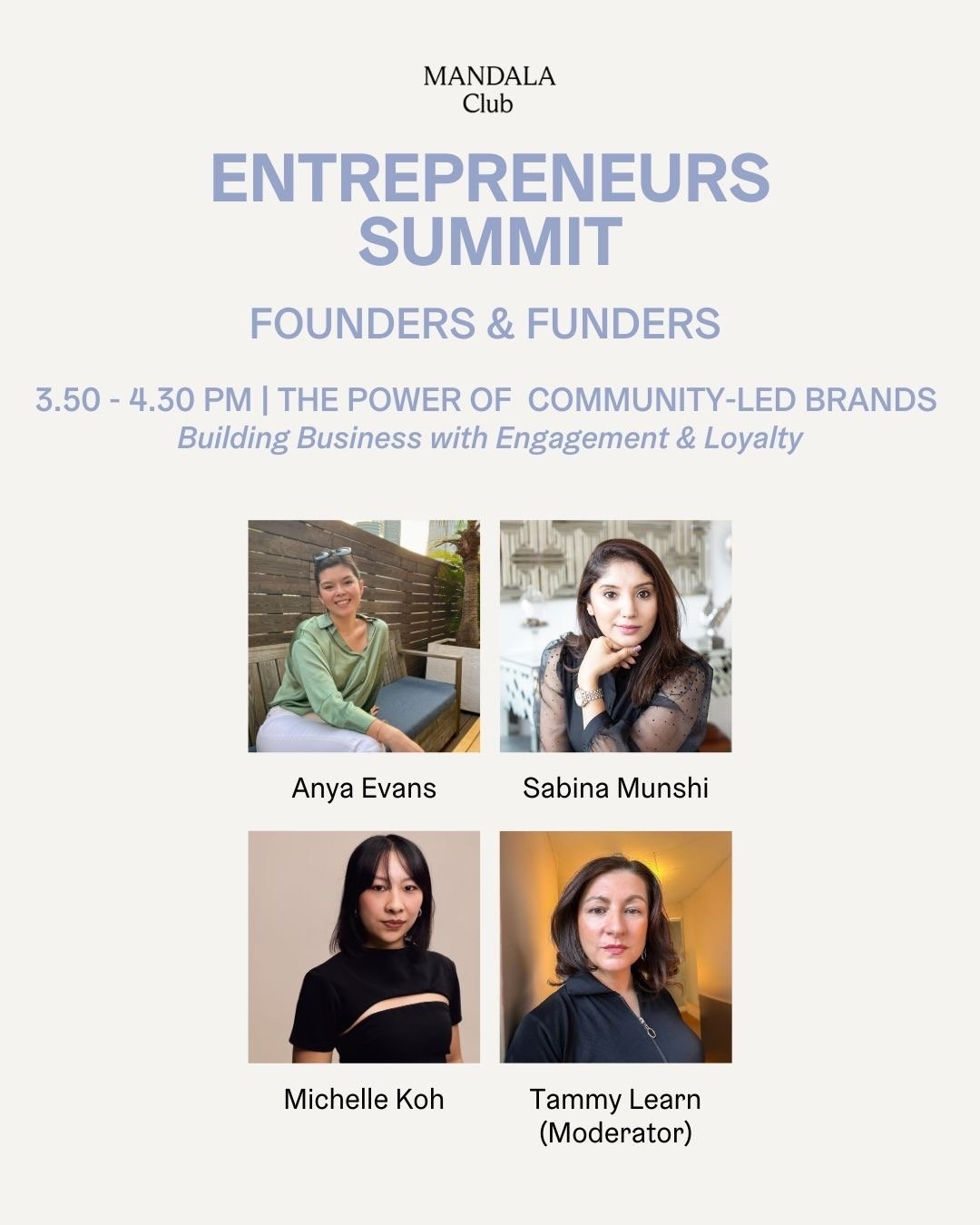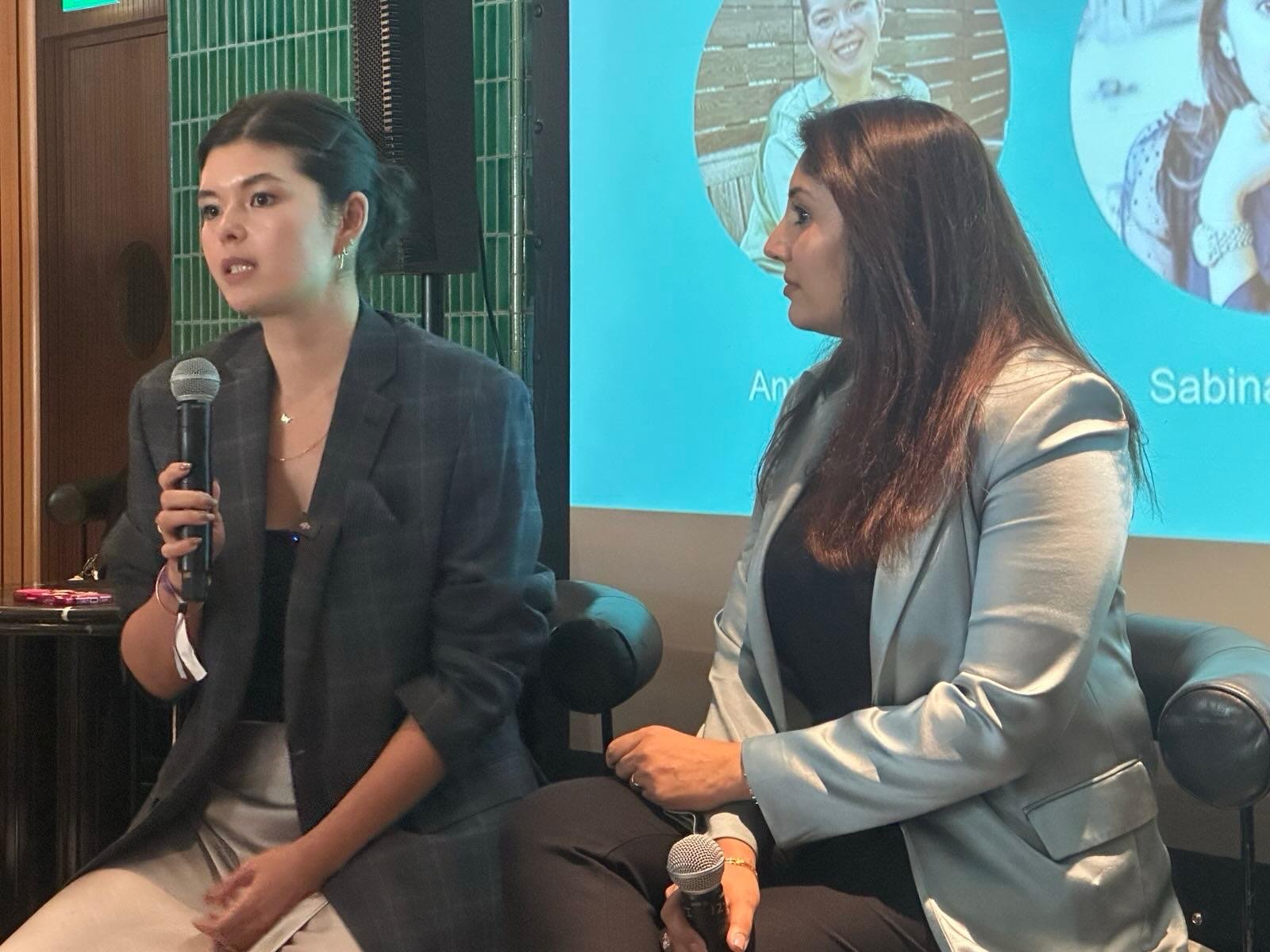The Power of Building Community-Led Brands: Lessons from Industry Leaders
Inaugural Entrepreneurs Summit at Mandala Club
In a world where customer acquisition costs are rising and digital noise is at an all-time high, community-led brands have a significant advantage. According to a recent McKinsey report, brands with strong communities experience 20-30% higher conversion rates and shorter purchasing cycles. But what does it take to build and sustain a thriving brand community?
At a recent panel discussion moderated by serial founder Tammy Learn, three industry leaders shared their insights on leveraging community as a business strategy. The panel featured:
Anya Evans, Founder of Venture Muse Club, helping investors decode and quantify a brand's cultural influence and community strength.
Sabina Munshi, Founder of Baréskin, a Singapore-based skincare brand rooted in authenticity and community-driven growth.
Michelle Koh, Founder of Saya, a growth engine for creative brands, turning community into a strategic advantage.
Here’s what we learned from their discussion on how brands can harness the power of community.
Why Community is a Business Strategy, Not Just Marketing
One of the biggest misconceptions about community-building is that it’s merely a marketing tactic. The reality? Community is a business strategy that can be a brand’s strongest asset and competitive moat.
"The most successful community-led brands don’t see community as a marketing strategy. Community is a business strategy." – Michelle Koh
Community-led brands reduce reliance on paid ads, build organic word-of-mouth, and create deep customer loyalty. More importantly, they develop resilience against external market shocks, such as fluctuating ad costs or economic downturns.
Key Takeaway: If you’re building a brand, community should be at the core of your business model—not an afterthought.
How to Start Building Your Community from Scratch
For early-stage brands, the first challenge is often finding the first 50-100 loyal members of your community. Here’s how our panelists tackled this in their own businesses:
1. Share Your Journey Publicly
Before launching her skincare brand, Sabina Munshi built a community by sharing her personal motherhood struggles. She documented the development of Baréskin’s products in real-time, bringing her audience along for the journey. By the time she launched, she had 40,000 engaged moms waiting to buy.
"When the product finally launched, the community felt like they were part of the journey. They showed up for me—and for themselves." – Sabina Munshi
2. Identify the Real Needs of Your Audience
Before finalizing her business model, Anya Evans spent weeks talking to investors, identifying a common pain point: difficulty evaluating the unquantifiable aspects of consumer brands, such as community strength. This insight shaped the core offering of Venture Muse Club.
"I knew I needed to build a business that my community actually needed. Talking to them first made all the difference." – Anya Evans
3. Leverage Collaborations for Faster Growth
Collaboration is an underrated shortcut to building a strong brand community. Baréskin partnered with complementary brands in the wellness and skincare space, tapping into each other's customer bases.
"Your audience doesn’t exist in a vacuum. They need multiple touchpoints. Collaborating with like-minded brands helped us grow faster." – Sabina Munshi
Key Takeaway: Authentic storytelling, listening to your audience, and leveraging collaborations can help you grow your first community members organically.
Overcoming the Biggest Obstacle: Time & Resources
A common pushback against community-building is that it takes too much time and money. But our panelists debunked this myth, offering practical solutions:
1. Treat Community as an Investment, Not an Expense
Brands that truly integrate community into their business model see it as an investment in longevity, not a short-term marketing cost.
"Community isn’t a liability—it’s an asset that de-risks your brand. When tough times hit, a strong community keeps you afloat." – Anya Evans
2. Start Small with High-Touch Engagement
You don’t need a fancy online platform to foster community. Start with WhatsApp groups, newsletters, or even direct LinkedIn messages. Sabina personally sets aside 30 minutes before bedtime to reply to customer messages.
"No amount of time is too much time. The more effort you put into engagement, the higher your conversions will be." – Sabina Munshi
3. Automate Where You Can, But Keep the Human Touch
As communities scale, maintaining personal engagement becomes harder. The solution? Invest in dedicated community managers while still keeping certain touchpoints personal.
Key Takeaway: Treat community-building as an investment, and start small with meaningful interactions before scaling up.
Scaling Your Community Without Losing Engagement
As brands grow, maintaining authentic engagement becomes more challenging. The panelists shared strategies for ensuring community members remain active and involved:
Differentiate between an audience and a community. A large social following doesn’t equal an engaged community. Build spaces for deeper interaction, such as private groups or IRL events.
Create a brand universe. Think beyond just selling products—consider what else your customers care about and build around those interests.
Keep engagement high by fostering two-way conversations. Community members should feel like participants, not just consumers of content.
"Engagement isn’t about intensity—it’s about intentionality. Build a brand that people want to talk about even when you’re not in the room." – Michelle Koh
Key Takeaway: Community engagement should evolve as your brand scales. Focus on depth, not just numbers.
Final Words: Finding Your Tribe & Playing the Long Game
If you’re building a brand today, integrating community from day one is one of the best long-term strategies for growth and resilience. But it requires patience, authenticity, and a mindset shift:
Find your tribe—you’re not for everyone, and that’s okay.
Give more than you take—prioritize value creation before monetization.
Think beyond transactions—build a brand ecosystem, not just a product.
"The future belongs to brands that go beyond the consumer-business dynamic and create something bigger—a co-created world where customers feel like they belong." – Michelle Koh
Want More Insights on Community-Led Growth?
For more insights on consumer brand investing, subscribe to our newsletter below and follow us on LinkedIn.
Panelists & Their Brands:






